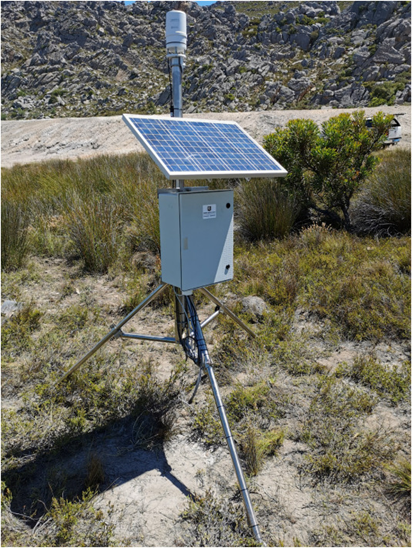


Solar energy is the most abundant clean energy source available on earth, but the intermittent nature of it gives rise to challenges regarding grid stability. To fully tap into this resource, it is critical that solar energy is stored efficiently. This challenge can be addressed with the use of chemical fuels that are synthesized using renewable energy. A particularly attractive solar fuel is hydrogen.
An integrated, modular system that uses solar energy directly to produce hydrogen from the moisture in the air guarantees that the hydrogen is produced from a renewable energy source. (When an electrolyzer is connected to an electrical grid, it may be only partially supplied by renewable energy.) Such a modular system could address a multitude of problems, including the following:
- Sub-optimal water purity
- Water scarcity in high solar-radiation areas
- Complicated system architecture that includes pumps, tubing, and filters
- High costs associated with complex systems
In addition, this integrated, modular system helps in reaching the goals of energy security, energy equity, and environmental sustainability.
Air temperature, relative humidity, solar radiation, and wind speed are the most important ambient conditions for determining the potential of air-based solar hydrogen production. These varying conditions all play a significant role in the availability of water vapor and make the expansion of vapor-fed, solar hydrogen production a challenge. Careful monitoring of the microclimatic resource is necessary to ascertain the feasibility of decentralized, air-based solar hydrogen production at a specific location.
In 2020, Campbell Scientific Africa (CSAF) supplied two automated weather stations to Foster Lubbe, a researcher at KU Leuven, for a project to monitor a microclimatic resource and assess the feasibility of hydrogen production by an air-based solar hydrogen device. This characterization was followed by an analysis of microclimate dynamics that led to the demonstration of a new framework for water-from-air management.
CSAF assisted with installing the two stations at a farm in the Western Cape in South Africa. These stations create a two-tiered system for the investigation of microclimate dynamics. The first weather station uses a ClimaVue™50 Compact Digital Weather Sensor. The second weather station measures temperature and relative humidity at four different heights above the ground. Weather data from the stations is logged at 10-minute intervals using a CR310 datalogger. The sensors used in this project are described in a table: https://www.cell.com/action/showFullTableHTML?isHtml=true&tableId=tbl1&pii=S2405-8440%2822%2901171-9.
The analysis of the data from this two-tiered system provides a better understanding of the dynamics and patterns that exist between different climatic variables in the microclimate and aid in the optimization of control strategies for decentralized, air-based hydrogen production. The site-specific weather data from this project is useful for proposing a universal strategy that could be applied to other sites for the management of water-from-air devices.
ケーススタディの概要
アプリケーション
Monitoring microclimatic resources場所
Western Cape, South Africa使用製品
ClimaVue 50 CR310寄稿者
Foster Lubbe, KU Leuven; Campbell Scientific Africa (CSAF)計測項目
Air temperature, relative humidity, solar radiation, wind speed関連ウェブサイト
Published Research Article Regarding This ProjectPDFで見る